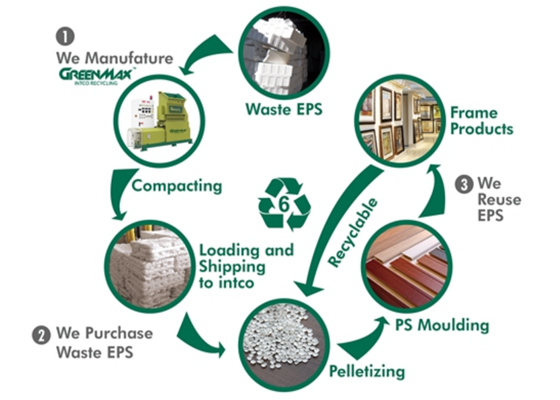Integrating EPS melting machines into the recycling system will effectively solve marine plastic pollution from the source
Sechelt Landfill opens April 28,the service will be made available to small-scale shoreline clean-ups by individuals or community organizations as a one-year experimental project. According to a press statement dated April 24, it is the result of a collaboration between the nonprofit Ocean Legacy Foundation (OLF), the landfill operator, and the Sunshine Coast Regional District (SCRD). The group targeted at this event is mainly communities and residents, and waste EPS generated by large residential, commercial or industrial terminals will not be accepted.The materials will be shipped to Ocean Legacy's marine plastic processing facility in Richmond, where they will undergo a series of processes including washing, drying, shredding, heating, cutting, and finally transformation into plastic pellets. The recycled pellets are used to make benches, boat pieces, and non-structural lumber, among other things.

The current EPS recycling recycling model is worthy of admiration. Generally speaking, the entire process includes collection-compression-re-granulation-reproduction of finished products. This recycling concept is also fully in line with INTCO GREENMAX’s recycling ideas. As a machinery company under INTCO Recycling, GREENMAX forms a complete EPS recycling machine with INTCO Recycling. At the same time, as an indispensable part of it, it provides efficient recycling equipment such as EPS melting machine. The collection of EPS waste mainly depends on the consciousness of residents and whether the community organizes recycling activities at a reasonable frequency. The success of EPS compression depends on whether there is a reasonable EPS recycling machine.
.jpg)
GREENMAX EPS melting machine uses hot melt technology and has a high compression ratio, which can compress waste into dense ingots. In order to ensure the effective formation of EPS recycling machines, INTCO Recycling not only established the machinery brand GREENMAX, but also bought back EPS waste. You can even understand that the history of INTCO Recycling's recycling business is earlier than the history of the machinery brand! INTCO uses these waste EPS for granulation. Because these EPS ingots are to be sold all over the world, they use an EPS melting machine to reduce their volume so that long-distance transportation can be achieved.

According to SCRD, the Sechelt landfill received little less than 16 tons of beach and dock foam. The amount of space required for eight days of landfill life—about 6,000 square meters, or roughly three tennis courts—was occupied by that garbage. This shows the importance of the EPS recycling project. Without the recycling project, our environment and life will be deeply harmed by EPS waste pollution.
